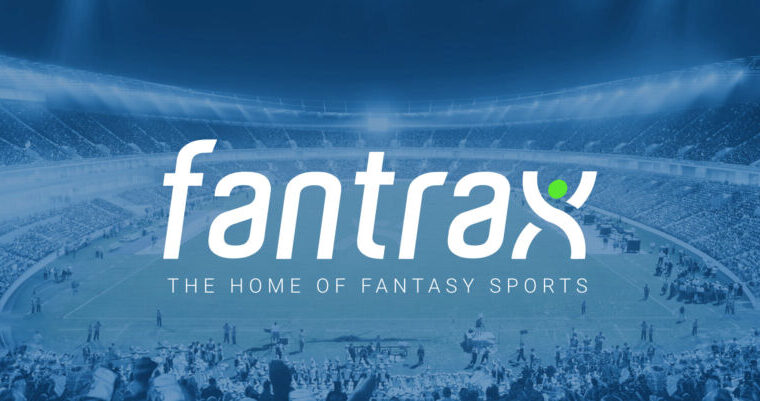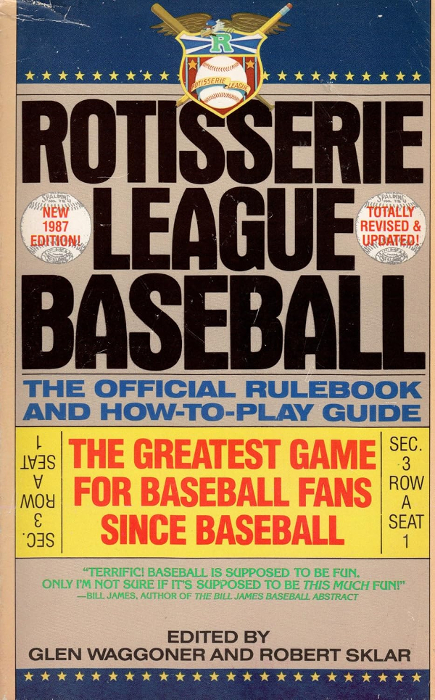-
 January 27, 2025, 10:00 am
January 27, 2025, 10:00 amLast Updated on July 3, 2025 9:42 pm by Anthony Kates | Published: January 27, 2025
New year, new you, so why not a new game to play, amirite? It can’t possibly be that difficult to build a baseball team and compete against eleven other managers and win a title, can it? I mean, there has to be only one way to play, right? The rules I am sure are simple. It’s baseball. See ball, hit ball, catch ball, throw ball. So how hard can fantasy baseball really be?
Fantasy baseball is an extremely difficult game to play and even harder to master and win. From choosing your scoring type to league type, which categories will you count to how many teams in the league and whether you will re-draft yearly or keep the same teams year over year, starting out can be very overwhelming.
Luckily, you have me, your fantasy baseball Sherpa. I have played every form of fantasy baseball since I started playing way back in 1998, so I’ve decided to put together a nice, easy to read, but very informative, beginner’s guide to fantasy baseball. We’ll cover all of the different league types, scoring types, most used categories, websites to play on, draft types and touch on a few of the best sites for statistical research and knowledge.
How Many Teams Should Your League Have?
First and foremost, there is no true standard number of teams in all leagues. I’ve played in leagues with as few as six teams (though, this was when we added stats up by hand, using newspapers daily) and leagues as deep as 30 teams, where we used real-life salaries and played out 162 game seasons on the CBS platform.
Before you decide how many teams you want in your league, you need to determine if you will be playing with friends, family and colleagues or with strangers. If it is with the people in your life that you know love and enjoy the game of baseball as much as you do, keep it as small, simple and intimate as possible, especially if you are all learning how to play the game together. An eight or ten team league of new players is a great way to learn and make mistakes together.
If you are playing with strangers, though, odds are you will play in leagues of 12 to 15 teams. Leagues with more than 15 teams can get very unwieldy and very ridiculous, very quickly. Most sites host 12 team leagues as the standard, though more and more are using 15 teams as the standard bearer for their rotisserie leagues.
Where to Play Fantasy Baseball?

ESPN – the original fantasy baseball online platform and the oldest still active platform. Basic, easy to use, great for beginners, but limited customization and not great for anything other than standard leagues.
Yahoo – probably the best mobile platform, as their app is easy to use and navigate and is updated regularly and rarely has problems. The second oldest running fantasy baseball platform and the place I have been playing for the longest. Like ESPN, it is basic and easy to use, great for beginners, but lacks a depth of customization and really is best just for standard leagues.
CBS – they were the first place to invest in the diversity of depth that fantasy baseball leagues can have. Great for new players and experienced alike, but has, over the last few years, been rated as the worst place to play fantasy baseball. Everyone’s experience is different though and I know of at least two leagues that have been going strong over on CBS for over 15 years (one is a thirty team league and the other a sixteen team league; both dynasty leagues).
Fantrax – the Golden Goat, if you will, of fantasy baseball. Fantrax has the most customization of any of the platforms, is constantly updating how to play the game, they are quick to add new players to the league or the minor leagues, they are very active on social media but have a clunky mobile app. Whether you play in their free leagues or cash leagues, the customization available for any and all league types. They are the most in-depth platform around and my absolute favorite place to play.
National Fantasy Championships (NFC) – these are the big leagues of fantasy baseball. This is where all of the high stakes competitions take place, from the Main Event leagues with an overall prize of $200,000 to the Auction Championships with an overall prize of $30,000, this is not the place for the faint of heart. The stakes and buy-ins are all over the place, with buy-ins as low as only $50 and as high as $15,000, there is something for everyone who is itching to test their mettle against the best of the best.
What Kind of League Should I Play In?
Re-Draft League – the most basic and most common league type is the re-draft league. These are leagues where you draft a team, use it for that one season and then that is it. Once the year is over, the team is done. There are probably more re-draft leagues than all other league types combined and nearly all of the high stakes leagues are re-draft leagues. Re-draft leagues are probably the best league types for those new to fantasy baseball, because you only have to worry about one season, the one you are in, and you can make them as user friendly as possible.
Keeper League – Keeper leagues are like re-draft leagues, except for the fact that you will get to keep X number of your players from your roster from one season into the next. The X number depends on the rules of the league – usually no lower than three players and no more than 10 to 12 players (once you get past keeping half or more of your team, you’re playing in a different league type, in my opinion). Some leagues determine who you can keep based on when they were drafted (like, you cannot keep any players drafted before the fifth round), others just limit you to a certain number of keepers and others determine the cost of the keeper based on specifics such as the round they were drafted in or the auction value they produced.
Let’s use an example: You are in a 12 team, five man keeper league. That means there are twelve teams and you can keep five players each, that you will have on your roster to begin the next season. So when the next season is here and you are drafting your teams, there will already be 60 players on rosters and no longer in the draft pool. You would then draft to build around your five players. Then do it all again the next year, picking five players again to keep. And continue to do this in perpetuity or until the league closes.
Dynasty League – the deepest kind of league, dynasty leagues involve you keeping your entire roster season over season. This may or may not include managing a minor league roster or being required to roster X number of minor league players. Every year there are not normal drafts, normally just first year player drafts (a draft involving the most recently drafted MLB players plus international free agents that joined MLB or MiLB over the latest free agency period or IFA period), maybe a free agent draft (if your league doesn’t allow openly adding free agents in the off-season, some leagues will have a free agent draft for teams to draft any league free agents before the season starts that they are interested in) and, occasionally, a minor league draft (for leagues that don’t allow managers to openly add and drop minor league players throughout the season). Leagues can last for decades (I know of a dynasty league that started on the message board the Sons of Sam Horn in the 90’s that is still going strong today) and teams have to craft that perfect strategy of building for the current season but also being competitive year over year without the help of a full draft. More and more players are joining dynasty leagues year over year and I believe this will be the highest played league type very soon.
What Kind of Scoring Should We Have?

Rotisserie – The oldest and still most used scoring format, rotisserie, or roto, scoring involves accumulating statistics in a minimum of eight categories (four hitting, four pitching) to a maximum of X number of categories depending on the league. There has to be an equal amount of hitting and pitching categories, so neither hitting nor pitching seems “more valuable”. Teams are ranked based on their performance in various statistical categories (the most common are runs, home runs, RBI, stolen bases and batting average for hitters and wins, saves, strikeouts, ERA and WHIP for pitchers) at the end of the season, with points awarded based on their ranking in each category, where the team with the best number in a category gets the most points, and the team with the worst number gets the least. These points are then added together and teams finish ranked from the highest amount of points to the least. Nearly all high stakes leagues have rotisserie scoring, since it is the season long accumulation of stats and random hot and cold weeks won’t affect the end of the year, compared to other versions of scoring (head to head or points).
Head to Head – The second most common scoring format, head to head leagues involve each team facing off with a different team each week, with each team vying to win the most categories and the match-up overall. The standard scoring categories are the same as roto (runs, home runs, RBI, stolen bases and average for hitters; wins, saves, strikeouts, ERA and WHIP for pitchers), though the winner each week is determined by who won more categories. Category wins and losses are added up throughout the season and the teams with the best records face off over multiple playoff rounds before ultimately determining the league winner. One of the big differences between roto and head to head leagues is that hot and cold streaks by players can ultimately affect your weekly match-ups, so even the best teams can lose to worse teams just because their team was cold at the wrong time.
An example weekly match-up: Team A scored more runs, hit more home runs, stole more bases, won more games, struck out more batters and had a better WHIP than Team B, so their record for the week would be 6-4. Each week after that their record would be added together and, after 22 to 23 weeks, if they are one of the top X teams in the league (X being the number of teams to make the playoffs), they would compete in the playoffs to determine the overall champion.
Points – Points are the newest types of scoring and least used format, but the number of leagues that use points scoring are slowly growing. In points leagues, each team accumulates points based on the production of each starting player. Like in head to head, each team faces one team each week, accumulating stats and scoring as many points as possible, with the team that scores the most points winning the match-up. In a standard points league, a hit is one point, a double two points, a stolen base might be 1.5 points and a win is five points, for example, so a player who has, say, six hits, two doubles, five runs and three stolen bases at the end of the week would have scored 19.5 points for their manager. The strategy for points leagues compared to roto and head to head can be very different, depending on which set of statistics is more valuable than the others (in most leagues that’s pitching stats, so pitchers tend to score more than hitters, which leads to pitching being drafted earlier and more often than in roto or head to head leagues).
How Should We Draft?

Snake – Snake drafts are the standard drafts across the majority of leagues today. A snake draft means that, in a 12 team league, teams will draft in order, 1 to 12, in odd rounds and then in reverse in even rounds, 12 to 1. The rounds will continue to alternate until all rosters are full (usually 28 to 30 rounds). Teams on the ends of rounds will have back to back picks (12 picks at the end of odd rounds and beginning of even rounds, 1 picks at the end of even rounds and beginning of odd rounds).
Auction – Growing in popularity, auction drafts are seen as the “best” drafts by people who only draft using auctions, because every manager has the same chance at drafting every player. Each manager is given a $260 budget to fill out their entire roster. Players are then nominated by managers in a nomination order (instead of a draft order) and each and every manager can bid on each and every player, giving managers the best opportunity to pair up Shohei Ohtani and Aaron Judge on one roster. The only limitations are roster sizes and shapes and making sure that you have enough money at any given time to bid $1 on each of your available roster spots. The strategy behind auction drafts is much more complex than snake drafts, as well, because there is a strategy behind bidding, nominating, how much to spend on pitching, how much to spend on hitting, how much to pay for saves…I could go on.
Standard – Not a common draft format, but still used in some places. Standard drafts start with the manager who has pick one and then team by team until all managers had made a pick, then starts back over at the top of the draft order, instead of reversing like a snake draft. This gives extra weight and worth to the top overall picks and is one of the reasons that it isn’t more popular in leagues today. In a snake draft, there is value to be found at all draft spots, compared to a standard draft, where the top draft spots are given more value overall (imagine being able to draft three top 25 fantasy players in the first three rounds just because you lucked out with the number one pick).
How Often Should We Set Our Lineups?
Daily Lineup Changes – The much more time consuming and far more active is daily lineup changes. This allows managers to react to injuries, rest days, prospect call-ups, bereavement leave, birth of a child, cold streaks and hot streaks far easier than weekly lineup changes. This means you will be spending far more time tweaking your lineup, your rotation and moving relievers in and out of the lineup based on whether or not their teams are playing on a given day.
Weekly Lineup Changes – The least time consuming and most popular lineup change setting. Most high stakes leagues use weekly lineup changes, with lineups locking at the first pitch of the first game of the week. Obviously, this means you cannot react to mid-week injuries, call-ups, hot streaks, cold streaks, bereavement leaves, childbirths or any other positive or negative change. But it does mean that you just have to set it once and it is set for the week. (Some of the high stakes leagues have a slight tweak to weekly lineup changes and that is allowing lineup changes on Friday for your hitters only; so you have to plan out your full pitching plan by Monday, but can change your hitters up for the weekend if you must.)
How Do We Add Free Agents?
Free For All (FFA) or First Come, First Served (FCFS) – These are pretty self explanatory, but they pretty much mean that you can pick up free agents at will, at any given time, with the only competition in picking up anyone is someone beating you to the punch. This was the most popular way to do free agency for a very long time, but that has changed over the past few years.
Waivers – The waiver format can run daily, multiple days of the week or weekly. The waiver order is determined by record first (worst record has the first waiver priority) and then by waiver pickups after (say that the worst team picks up a player off of the waivers, they would then move to the bottom of the waiver order and the next worst team would move up; the order continues to change as teams pick up players off of the waiver). If multiple teams put in a claim for a player, the team with the highest priority would be rewarded with the player. One version of waivers is a combination of FFA and waivers: all players are free to be picked up by anyone, but once a player is dropped (or a new player is added to the player pool) they are on waivers for 48 to 72 hours, giving managers an opportunity to put in a claim.
Free Agent Acquisition Budget (FAAB) – FAAB has slowly become the most popular format of free agent acquisition in all the fantasy sports (all of my football leagues used it and most of my basketball leagues use it now). Each team is given a monetary budget to spend on free agents throughout the season and use the budget to place blind bids on free agents. FAAB can be processed daily, over multiple days or weekly, just like waivers, with the highest bid winning the rights to the free agent. Once a team runs out of their FAAB, though, they may no longer bid on free agents (unless your league allows zero dollar bids, though most competitive leagues do not). This adds another wrinkle of strategy into the game, as guessing high and low bids and saving FAAB for the right free agent will be different for each manager.
Can We Trade Players?
In most leagues, yes, you can trade players. In some leagues, trades are executed right away, while in others there is a bit of oversight for trades. That oversight could be a trade committee (a handful of the managers in the league are selected to view every trade made through an unbiased lens to determine whether or not the trade should be vetoed), a league wide veto system (if two-thirds of the league veto the trade then it is cancelled) or a commissioner veto (the commish decides whether to approve or deny the trade). Vetoes, though, are a very controversial tool in most fantasy leagues, as many fantasy players will exercise a veto so one of their competitors doesn’t get to improve their team or because they were unable to acquire one of the players in the deal. I personally believe that vetoes should only be used if you can a) prove that collusion has happened between the two trading parties or b) the trade would affect the league in such a way as to be harmful to the competitive spirit of the league (like a team trading away Shohei Ohtani for, say, the White Sox’s middle reliever and #5 starter because they are a fan of the team and wanted players from their favorite team). Just because you don’t like a deal or think the manager could have gotten more elsewhere isn’t a good enough reason to veto, in my opinion.
What do We do Next?
Play this beautiful game. The season starts in March and ends in September every year. Each and every league brings with it its own strategies and quirks, figuring them out through the draft, free agency and the entirety of the season is part of the fun itself. No other sport plays more games or has more fantasy viable players than baseball. From April 1st until September 30th, there is a baseball game on every single day except for like six total days. So sit back, set your rosters, make some trades and enjoy the season. It’s the longest season that will be over in the blink of an eye.
Click here to join us on Discord!
Follow us on X by clicking here
Follow us on Bluesky by clicking here
Come join us at SportsEthos by filling out an application by clicking here
Follow Anthony on X at @akfantasybb
Follow Anthony on Bluesky at @akfantasybb.bsky.social

